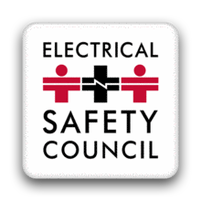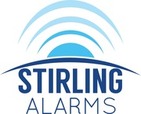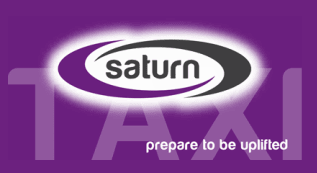|
We've just had a conversation with SELECT Managing Director Newell McGuiness who took the time and effort to contact us regarding an industry related item. Thank you and it was much appreciated.
0 Comments
 We issue both certificates and reports on completion of electrical installation work and after a routine test on an existing electrical installation. But what are the differences - the below article will explain what type of report you will receive and when. -------- Certificates and reports issued in connection with an electrical installation serve completely different purposes and it is important that the appropriate type of documentation is issued after completion of electrical installation work or periodic inspection and testing. As its title suggests, an Electrical Installation Certificate certifies that new electrical installation work complies with the current edition of BS 7671; it is not suitable for reporting on the condition of an existing installation and should not be used for that purpose. Similarly, an Electrical Installation Condition Report is not suitable for the initial certification of a new installation, or of new work associated with an alteration or addition to an existing installation, and so should not be used for that purpose. On completion of the initial verification of an electrical installation, or of an alteration or addition to an installation, an Electrical Installation Certificate (EIC) or Minor Electrical Installation Works Certificate (MEIWC) should be issued (Regulation 631.1 of BS 7671 refers). The certificate issued should be based upon the model form given in Appendix 6 of BS 7671 and should include a record of the inspection activities performed and the results of the testing carried out as part of the verification process. Importantly, an EIC or MEIWC must not be issued until any defects or omissions revealed during the verification of the installation work covered by the certificate have been remedied (Regulation 632.4 of BS 7671 refers). Such certification includes a declaration that the installation work has been designed, constructed and inspected and tested in accordance with the requirements of BS 7671. In short, it is a declaration that the installation is safe to be taken into service. On completion of the periodic inspection and testing of an electrical installation, an Electrical Installation Condition Report (EICR) should be issued (Regulation 634.1 of BS 7671 refers). The report should be based upon the model form given in Appendix 6 of BS 7671 and should include a record of the inspection activities performed and the results of the testing carried out as part of the periodic inspection process. The report details the outcome of an assessment of the in-service condition of an electrical installation against the requirements of the issue of BS 7671 current at the time of the inspection, irrespective of the age of the installation or to which edition of the Wiring Regulations it was designed. Details of any damage, defects, deterioration, non-compliances or dangerous conditions should be recorded on the report (Regulation 634.2 of BS 7671 refers). The report contains a summary of the overall condition of the installation in terms of whether it remains satisfactory, or is unsatisfactory, for continued use. The report also provides feedback to the person who ordered the report in terms of the severity of the defects and departures observed and the urgency with which they should be addressed.  A new study by the Electrical Safety Council (ESC) finds landlords are exposing themselves to significant financial risks, from fines and invalidated insurance, through not acting on their electrical safety obligations. Ignoring their responsibilities means landlords are also putting millions of UK private tenants at risk of serious accident or fire. The study has found that 2 million private tenants have expressed concern about the electrical safety of their home. Each year in the UK, 70 people are killed by an electrical accident in the home and 350,000 sustain a serious injury from an electric shock. Government data also shows that Scottish homes are at greater risk from electrical fires than the rest of Great Britain. By law, landlords must ensure electrical installations and wiring are maintained in a safe condition throughout the tenancy. The ESC recommends landlords should have electrical appliances and installations checked at least every five years by a registered electrician, along with carrying out regular visual checks themselves. A spokesperson from the Association of British Insurers said: “Whilst the specifics of each insurance policy will vary, all insurers will expect landlords to comply with any current laws or regulations in regard to electrical safety - failure to do so may result in voidance of their policy. Electrical work is expected to be carried out by a qualified professional. For more information on the ECS Study - click here. For more information for Landlords on Electrical Safety - click here Stirling Electrical Services are here to help - find out more about our services to Landlord and Letting Agents. Kingfisher (Owners of B&Q) see a 30% drop in profits with the owners blaming poor weather and low customer confidence.
One of the solutions recently introduced to combat this dramatic decrease is the recently launched Homefit service where B&Q will provide customers with access to fully qualified and vetted local tradesmen at pre-agreed fixed prices, removing questions about working with unknown tradesmen. A service that looks like B&Q will not employ these tradesmen but instead contract them in with the tradesmen having no allegiance or even commitment to B&Q meaning that customers could receive a poor service as tradesmen juggle their own jobs while having a serious commitment as they pursue a venture from a reputable retail giant. At SES we have tried various trusted tradesmen schemes where we are vetted and have to pay for customer leads, we quickly opted out of all those schemes as a large proportion of customer leads we received had us competing against tradesmen who were under the VAT threshold and these schemes were also driven by a large percent of customers looking for rock bottom prices without considering customer service or value for money. The Homefit scheme is not a 'Buy for Leads" Scheme but I still worry for both tradesmen and customers in this latest venture as in the very competitive trades game the big player here similar to supermarkets will have to keep their overall sell price low so tradesmen while under the supervision of a B&Q project manager will be looking to work at hourly or job rates which in turn could affect overall service provided by the tradesman as they look to carry out a job quickly and as cheaply as possible within the budget set by B&Q. It's not a venture SES will be looking to get into, it may work out for some customers and tradesmen but it's one we are staying well clear of. Stirling Electrical Services are a member of SELECT, who support our business which in turn helps us provide our technical and customer relation services to you.
View SELECT promotional video below. http://vimeo.com/37654486 Sad sad story which unfortunately highlights the dangers of electricity and why it is recommended to have an Electrical Condition Report carried out every 5 years in commercial properties and every 10 years in domestic properties.
http://www.dailymail.co.uk/news/article-2291890/Spinster-62-dies-house-overloading-double-socket-12-electrical-items.html |
SES Blog
CLICK FOR NEW BLOG LINK & UPDATES Owner and Director Scott McLean updates this page with our company, business & industry related news, photos, videos.
Feel free to participate and comment on our posts. Connect with Scott
Connect With Us On....
Archives
August 2017
Categories
All
|








 RSS Feed
RSS Feed
